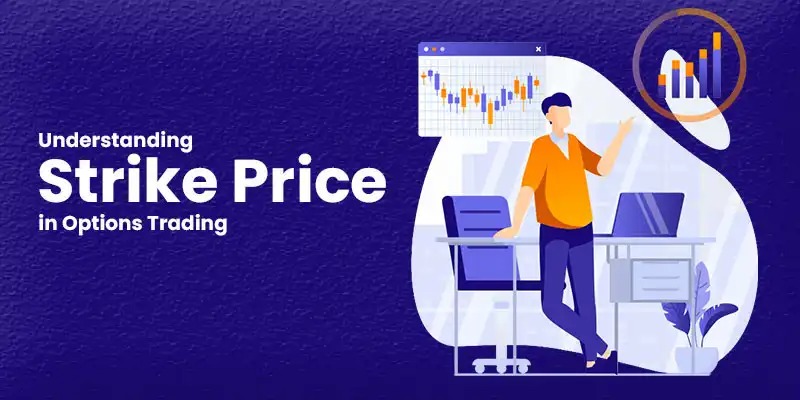Options trading is becoming very popular among investors in India. A central part of options trade is the “strike price.” It is an important term that can affect trade choices and results. Knowing the significance of the strike price helps buyers make better decisions in the derivatives market.
Contents
- What is a Strike Price
- Significance of Strike Price in Option Trading
- Determining the Trade Outcome
- Balancing Risk and Reward
- Impact on Premium Pricing
- Strategic Alignment with Market Outlook
- Influence on Option Greeks
- Conclusion
- FAQs
What is a Strike Price
The strike price is the specified price for which someone with an options contract may purchase or sell the asset. One can purchase the asset for a call option or sell the asset for a put option. It is the key factor determining if the trade is profitable and workable.
The strike price is essential, especially for stock and index options sold on the National Stock Exchange (NSE). It sets the fixed price at which someone with an option can buy or sell the underlying object.
Significance of Strike Price in Option Trading
Understanding the strike price is essential because it directly affects important parts of an options trade. These include profits, premiums, and intrinsic value.
Determining the Trade Outcome:
Whether an options contract expires in-the-money, at-the-money, or out-of-the-money affects the strike price.
- A call option is ITM when the present market value of the asset is higher than the strike price. Should the price be less than the strike price, a put option is ITM.
- ATM indicates that the strike price is exactly the asset’s current market price.
- OTM, or put options, are those whereby the market price is less than the strike price.
Selecting the appropriate strike price will help one ascertain if the option is essentially valuable or only a gamble.
Also Read: Key Approaches For Options Trading In 2025
Balancing Rewards and Risks:
The strike price is an important factor in determining the cost of an options contract and how it relates to changes in the market. Traders in India decide on strike prices based on their opinions of the market and the desired level of risk.
- Reduced Risk with ITM Options: These choices might cost more but are less likely to lose all their value. They provide a better chance of making a profit.
- More Chance of Bigger Gains with OTM Options: OTM choices are risky but have lower costs. They can provide significant profits if the market goes as expected.
Impact on Premium Pricing:
The strike price directly influences the profit of an options contract. ITM options typically cost more because they have real value. OTM options cost less because they depend on expected market changes.
Indian investors should learn how premiums relate to strike prices to help them understand how the market values options contracts.
Strategic Alignment with Market Outlook:
Strike prices impact how an options contract reacts to changes in the market.
- In a bullish market, you can select call options with strike values somewhat above the current market price.
- In a bearish market, put options with a strike price less than the going market price might be more beneficial.
Indian traders often use basic analysis and market trends to find the correct strike prices that match their predictions.
Influence on Option Greeks:
The strike price greatly affects the values of option Greeks like Delta, Gamma, and Theta. These Greeks look at how options react to changes in price, time, and market fluctuations. Knowing how the strike price relates to other factors can help you make better trade choices.
Conclusion
In Indian options dealing, strike price is an important factor influencing trade plans and results. A strike price is an important factor in deciding the price and value of an options contract in the futures market. Options trading needs a good understanding of different concepts, and knowing the strike price is key to making smart deals.
Also Read: How To Start Trading Options: A Step-By-Step Guide
Disclaimer: Investments in securities market are subject to market risks; read all the related documents carefully before investing.
FAQs
Choosing a strike price sets the trigger price for an options contract, which affects its cost and how it may behave in the market.
Options contracts are categorized based on how they relate to the current market price. ‘In-the-Money’ (ITM) options have prices that would be good to use right now. ‘At-the-Money’ (ATM) options have prices similar to the current market price. ‘Out-of-the-Money’ (OTM) options have prices that would not be good to use right now.
The strike price affects the profit of an options contract. ‘In-the-Money’ (ITM) contracts usually have higher prices, while ‘Out-of-the-Money’ (OTM) usually have lower prices. This difference is based on what the market expects.

